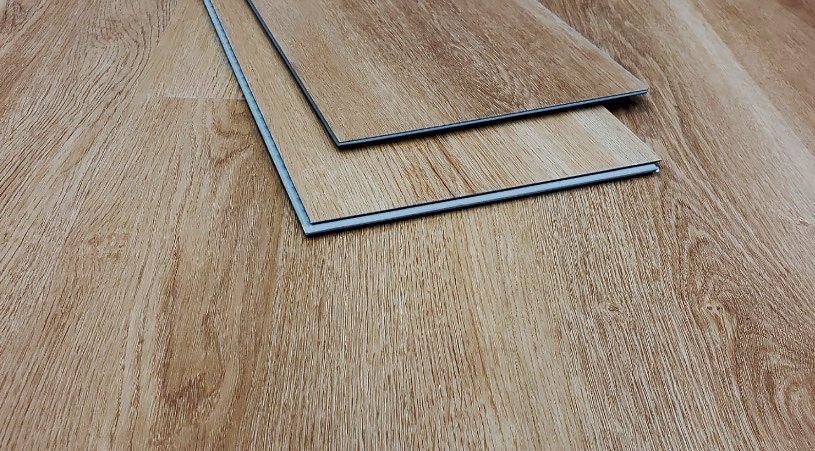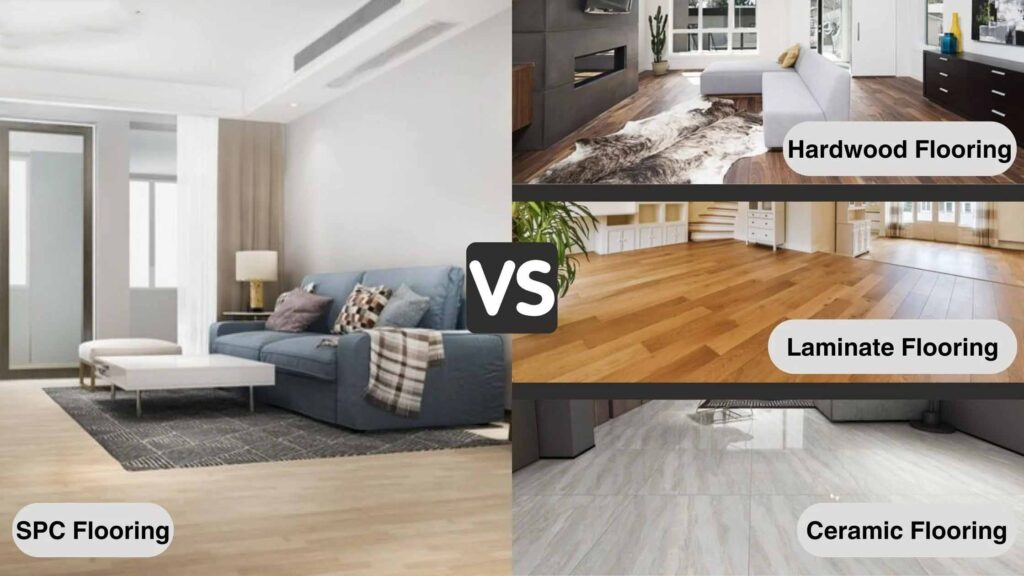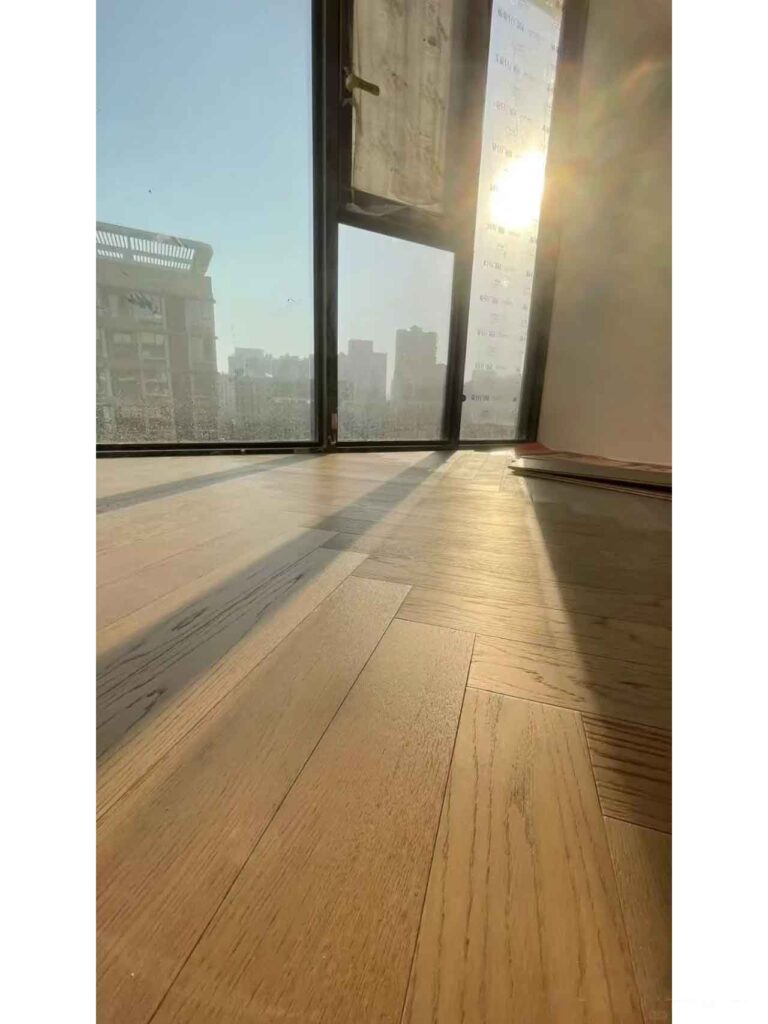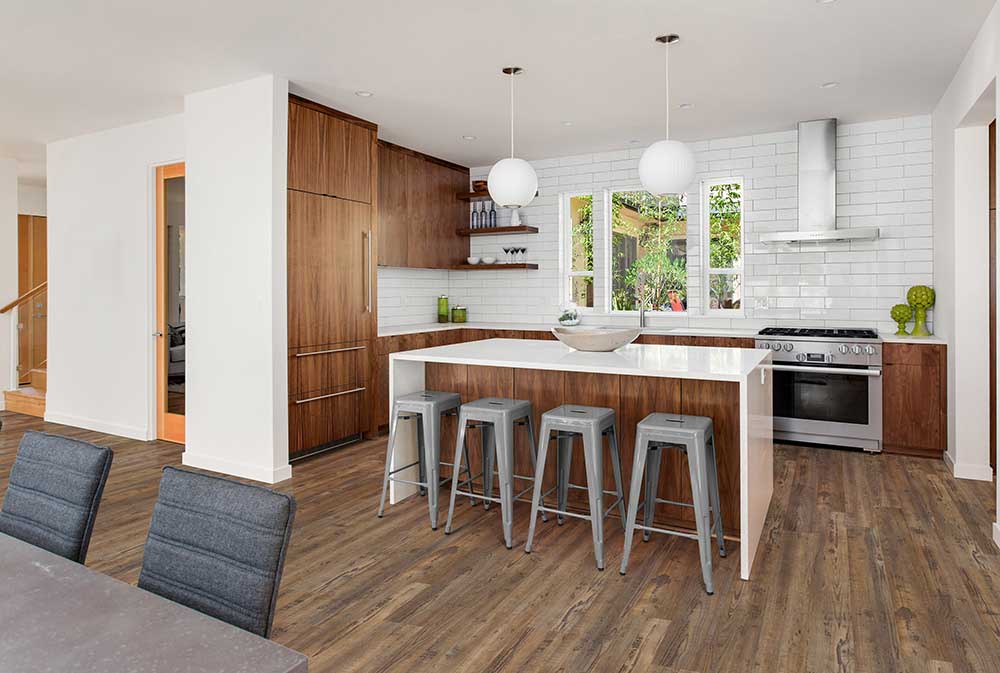Choosing the right flooring for your home or office is crucial, not only for aesthetics but also for durability, maintenance, and performance in various environments. Among the most popular choices are SPC (Stone Plastic Composite) flooring and traditional wooden flooring. While wooden flooring has been a long-standing favorite, SPC flooring is making waves due to its enhanced features and versatility. So, which one is better suited for your needs?
SPC flooring offers superior water resistance, easy maintenance, and durability compared to wooden flooring. However, the choice between the two depends on personal preference, budget, and the intended use of the space.
In this guide, we’ll explore the key differences between SPC flooring and wooden flooring, focusing on durability, cost-effectiveness, maintenance, and environmental impact to help you make an informed decision. If you’re contemplating which flooring to install, read on to understand how these options stack up.
1. What is SPC Flooring and How Does It Work?

SPC flooring is a relatively new and advanced flooring solution made from a combination of stone powder, PVC, and stabilizers, which gives it a rigid core. It is often considered a type of vinyl flooring due to its structure, but it stands out due to its enhanced properties, particularly in terms of durability and resistance to environmental factors.
SPC flooring is made up of four layers: a wear layer, a vinyl design layer, a stone composite core, and a backing layer. This combination makes it a durable, stable, and water-resistant option for various environments, including residential and commercial spaces.
- Wear Layer: The wear layer is the topmost layer that provides durability and protects the floor from scratches, stains, and general wear. It’s often made from a transparent material, such as polyurethane, which is designed to withstand heavy foot traffic.
- Vinyl Design Layer: Beneath the wear layer, the vinyl design layer provides the aesthetic appeal. It can mimic the appearance of wood, stone, or tile, allowing SPC flooring to complement a wide range of interior design styles.
- Stone Composite Core: The core is made from a mixture of limestone and PVC, which gives SPC flooring its rigidity and moisture resistance. This core is what differentiates SPC flooring from traditional vinyl flooring, as it provides more stability.
- Backing Layer: The backing layer adds extra stability and moisture resistance, preventing the flooring from absorbing moisture from the subfloor and ensuring the longevity of the floor.
| Layer | Material | Purpose |
|---|---|---|
| Wear Layer | Polyurethane or vinyl | Protects the surface from damage and wear |
| Vinyl Design Layer | PVC and other polymers | Provides design and aesthetic flexibility |
| Stone Composite Core | Limestone and PVC | Adds rigidity, stability, and resistance to moisture |
| Backing Layer | Foam or cork | Adds comfort and moisture resistance |
2. What Makes Wooden Flooring Different from SPC Flooring?

Wooden flooring is typically made from natural wood, which can be solid or engineered. It is known for its timeless aesthetic, natural texture, and elegance. However, wooden floors have certain limitations, especially in environments exposed to moisture or fluctuating temperatures.
Wooden flooring is made from natural wood and provides a warm, classic look. SPC flooring, on the other hand, is synthetic and offers enhanced durability, water resistance, and stability compared to wood.
- Material Composition: Wooden flooring can be solid or engineered, with solid wood being more susceptible to moisture, temperature changes, and physical wear. SPC flooring, being synthetic, is designed to resist these issues, making it a better choice for areas with higher humidity or temperature fluctuations.
- Aesthetic Appeal: Wooden flooring offers a natural look and texture that SPC flooring can mimic. However, many prefer the real wood grain look that wooden flooring offers, as it adds an organic warmth to the space.
- Environmental Impact: Wooden flooring is a natural product, but its environmental impact can vary depending on how the wood is sourced. SPC flooring, while synthetic, often uses recycled materials and is generally considered more environmentally friendly in terms of durability and longevity.
| Aspect | SPC Flooring | Wooden Flooring |
|---|---|---|
| Material Composition | Stone composite core with PVC | Natural wood or engineered wood |
| Aesthetic Appeal | Mimics wood, stone, or tile designs | Classic, natural look and texture |
| Environmental Impact | Often made with recycled materials | Varies based on sourcing and production |
3. Which Flooring Option is More Durable: SPC or Wooden Flooring?

Durability is one of the most important factors when choosing flooring. Whether it’s resistance to wear and tear, water damage, or scratches, both SPC and wooden flooring have their advantages.
SPC flooring is generally more durable than wooden flooring, especially when it comes to moisture resistance and impact resistance. Wooden floors can scratch and warp over time if not properly maintained.
- Moisture Resistance: SPC flooring is completely waterproof, making it ideal for kitchens, bathrooms, and basements. Wooden flooring, on the other hand, can warp, swell, or rot when exposed to excessive moisture.
- Scratch and Dent Resistance: SPC flooring’s wear layer provides excellent protection against scratches and dents. Wooden floors, while durable, are more prone to scratches from furniture, pet nails, or high heels.
- Wear and Tear: Wooden floors require regular maintenance, including sanding and refinishing, to maintain their appearance. SPC flooring, however, requires minimal maintenance, making it more convenient for high-traffic areas.
| Durability Factor | SPC Flooring | Wooden Flooring |
|---|---|---|
| Moisture Resistance | 100% waterproof | Prone to warping and swelling in moisture |
| Scratch and Dent Resistance | High durability, resistant to wear | Can get scratched or dented easily |
| Maintenance | Low maintenance | Requires periodic refinishing |
4. How Does SPC Flooring Perform in High-Moisture Areas?
The kitchen and bathroom are areas where moisture levels fluctuate regularly, which can be problematic for some types of flooring. SPC flooring is well-suited to handle these environments, making it a popular choice.
SPC flooring performs exceptionally well in high-moisture areas like kitchens and bathrooms due to its water-resistant properties, unlike wooden flooring, which can absorb moisture and suffer from damage.
- Waterproof Core: The stone composite core of SPC flooring prevents water from seeping into the material, ensuring that the flooring remains stable and unaffected by moisture. This makes SPC ideal for wet areas.
- Wooden Flooring Limitations: Wooden floors can warp or expand when exposed to water or high humidity. Even engineered wood can be prone to water damage, making it less suitable for kitchens and bathrooms where spills are frequent.
- Installation Considerations: When installing SPC flooring in high-moisture areas, it is important to use proper underlayment to provide extra moisture protection. Wooden floors may require additional sealing to prevent water damage.
| Environment | SPC Flooring Performance | Wooden Flooring Performance |
|---|---|---|
| Kitchens | Water-resistant, ideal for spills | Can warp and swell with moisture |
| Bathrooms | Perfect for wet environments | Vulnerable to water damage |
| Moisture-Prone Areas | Stable, resistant to humidity | Requires special care and maintenance |
5. Are There Any Drawbacks of SPC Flooring for Kitchens?

While SPC flooring offers many benefits, it’s important to consider potential drawbacks before installation. These can include environmental factors like temperature sensitivity and noise transmission.
SPC flooring may have slight expansion or contraction with temperature fluctuations and could produce more noise than wood. However, these issues can be mitigated with proper installation and underlayment.
- Temperature Sensitivity: While SPC flooring is more resistant to temperature changes than wood, extreme heat or cold can still cause minor expansion or contraction. This is especially true if the flooring is installed improperly or if the room’s climate is not controlled.
- Sound Transmission: SPC flooring can sometimes create more noise underfoot compared to wood. This can be managed by using soundproofing underlayment during installation.
- Aesthetic Limitations: While SPC can mimic the look of wood, some people may prefer the authentic feel and natural variations that real wood offers. SPC designs are limited to printed patterns and textures.
| Drawback | Impact on SPC Flooring | Solution |
|---|---|---|
| Temperature Sensitivity | Minor expansion or contraction | Use proper acclimation and expansion gaps |
| Sound Transmission | Can be noisy underfoot | Use underlayment for soundproofing |
| Aesthetic Limitations | Less organic compared to wood | Choose high-quality SPC designs |
6. How to Maintain SPC Flooring in the Kitchen?
SPC flooring is known for its low-maintenance needs. However, regular cleaning and care are necessary to keep the floor in optimal condition, especially in kitchens where spills and heavy traffic are common.
SPC flooring is easy to maintain, requiring only regular cleaning and periodic inspections. Unlike wooden flooring, it doesn’t need refinishing or sealing.
- Regular Cleaning: Sweep or vacuum your SPC floor regularly to prevent dirt and debris buildup. Use a damp mop for cleaning, but avoid excessive water, as it can seep into the edges.
- Climate Control: Maintaining consistent temperature and humidity levels in the kitchen will help prevent any expansion or contraction issues. Use a dehumidifier or air conditioner to maintain balance.
- Avoid Harsh Chemicals: When cleaning, avoid harsh chemicals that can damage the wear layer of SPC flooring. Instead, use mild detergents designed for vinyl floors.
| Maintenance Task | Action | Purpose |
|---|---|---|
| Regular Cleaning | Sweep and mop regularly | Prevents dirt buildup and moisture |
| Climate Control | Maintain stable temperature and humidity | Avoids expansion or contraction |
| Chemical-Free Cleaning | Use mild cleaners | Protects the wear layer |
Conclusion
When comparing SPC flooring to wooden flooring for kitchen use, SPC emerges as the superior choice due to its water resistance, durability, and low maintenance. While wooden floors offer timeless beauty, SPC flooring is more practical for kitchens, where spills, moisture, and heavy foot traffic are common. With proper installation and maintenance, SPC flooring can last for years and maintain its appeal.
If you’re considering SPC flooring for your kitchen, Kinwin offers high-quality, customizable SPC solutions tailored to your needs. Contact us today for a personalized quote and to learn more about our flooring options!


